Hideki Ochiai
Quaternion-Domain Super MDS for Robust 3D Localization
Jul 23, 2025Abstract:This paper proposes a novel low-complexity three-dimensional (3D) localization algorithm for wireless sensor networks, termed quanternion-domain super multi-dimensional scaling (QD-SMDS). The algorithm is based on a reformulation of the SMDS, originally developed in the real domain, using quaternion algebra. By representing 3D coordinates as quaternions, the method constructs a rank-1 Gram edge kernel (GEK) matrix that integrates both relative distance and angular information between nodes, which enhances the noise reduction effect achieved through low-rank truncation employing singular value decomposition (SVD), thereby improving robustness against information loss. To further reduce computational complexity, we also propose a variant of QD-SMDS that eliminates the need for the computationally expensive SVD by leveraging the inherent structure of the quaternion-domain GEK matrix. This alternative directly estimates node coordinates using only matrix multiplications within the quaternion domain. Simulation results demonstrate that the proposed method significantly improves localization accuracy compared to the original SMDS algorithm, especially in scenarios with substantial measurement errors. The proposed method also achieves comparable localization accuracy without requiring SVD.
Quaternion Domain Super MDS for 3D Localization
Apr 28, 2025
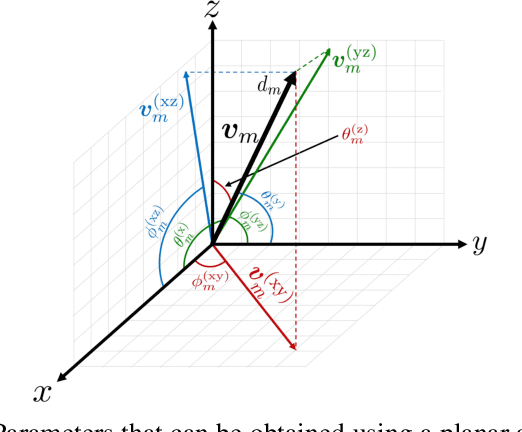
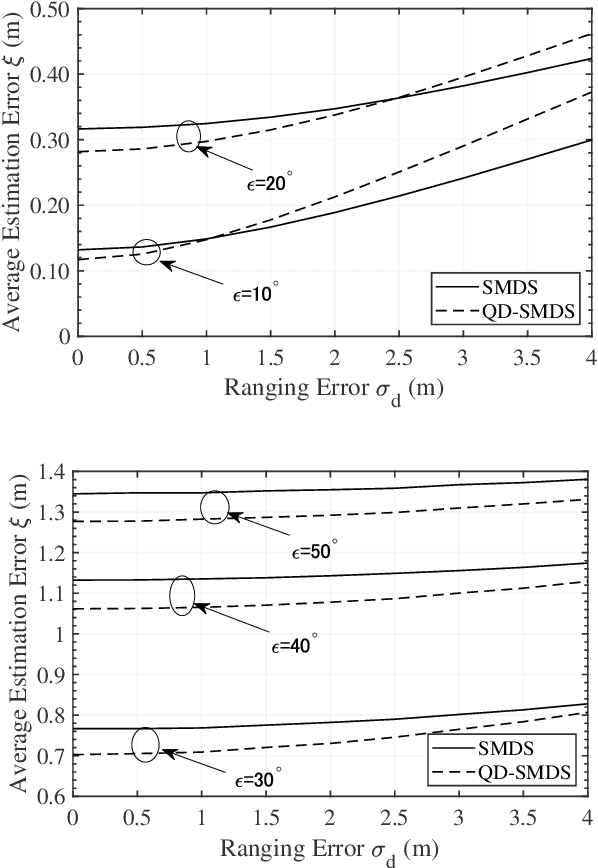
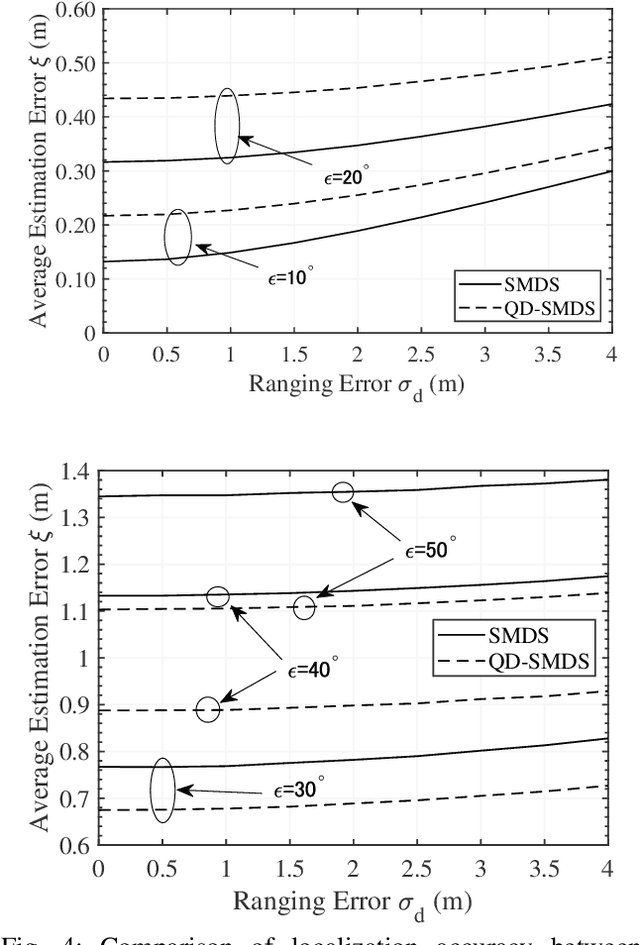
Abstract:We propose a novel low-complexity three-dimensional (3D) localization algorithm for wireless sensor networks, termed quaternion-domain super multidimensional scaling (QD-SMDS). This algorithm reformulates the conventional SMDS, which was originally developed in the real domain, into the quaternion domain. By representing 3D coordinates as quaternions, the method enables the construction of a rank-1 Gram edge kernel (GEK) matrix that integrates both relative distance and angular (phase) information between nodes, maximizing the noise reduction effect achieved through low-rank truncation via singular value decomposition (SVD). The simulation results indicate that the proposed method demonstrates a notable enhancement in localization accuracy relative to the conventional SMDS algorithm, particularly in scenarios characterized by substantial measurement errors.
Physical Layer Security for Integrated Sensing and Communication: A Survey
Apr 25, 2025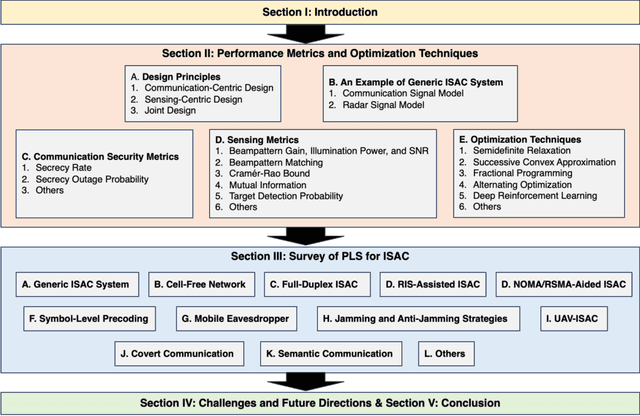
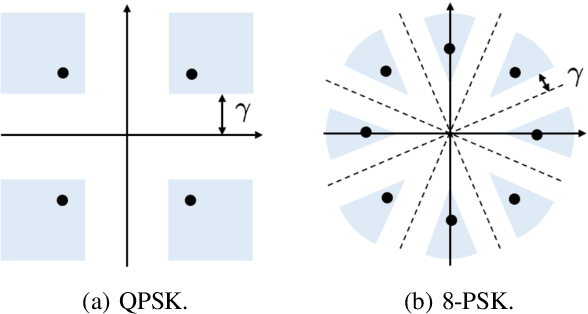
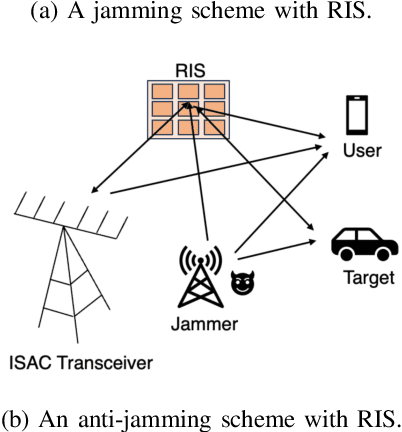
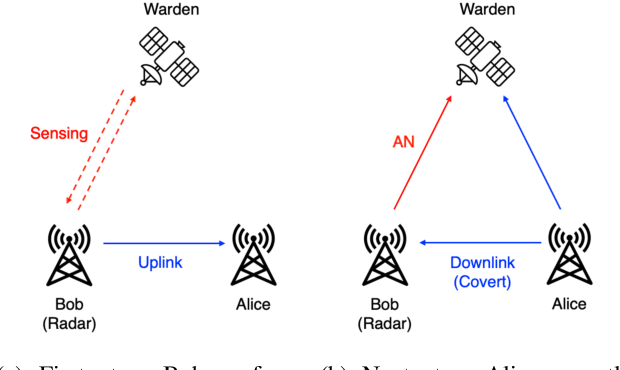
Abstract:Integrated sensing and communication (ISAC) has become a crucial technology in the development of next-generation wireless communication systems. The integration of communication and sensing functionalities on a unified spectrum and infrastructure is expected to enable a variety of emerging use cases. The introduction of ISAC has led to various new challenges and opportunities related to the security of wireless communications, resulting in significant research focused on ISAC system design in relation to physical layer security (PLS). The shared use of spectrum presents a risk where confidential messages embedded in probing ISAC signals may be exposed to potentially malicious sensing targets. This situation creates a tradeoff between sensing performance and security performance. The sensing functionality of ISAC offers a unique opportunity for PLS by utilizing sensing information regarding potential eavesdroppers to design secure PLS schemes. This study examines PLS methodologies to tackle the specified security challenge associated with ISAC. The study begins with a brief overview of performance metrics related to PLS and sensing, as well as the optimization techniques commonly utilized in the existing literature. A thorough examination of existing literature on PLS for ISAC is subsequently presented, with the objective of emphasizing the current state of research. The study concludes by outlining potential avenues for future research pertaining to secure ISAC systems.
Discrete-Valued Signal Estimation via Low-Complexity Message Passing Algorithm for Highly Correlated Measurements
Nov 13, 2024



Abstract:This paper considers a discrete-valued signal estimation scheme based on a low-complexity Bayesian optimal message passing algorithm (MPA) for solving massive linear inverse problems under highly correlated measurements. Gaussian belief propagation (GaBP) can be derived by applying the central limit theorem (CLT)-based Gaussian approximation to the sum-product algorithm (SPA) operating on a dense factor graph (FG), while matched filter (MF)-expectation propagation (EP) can be obtained based on the EP framework tailored for the same FG. Generalized approximate message passing (GAMP) can be found by applying a rigorous approximation technique for both of them in the large-system limit, and these three MPAs perform signal detection using MF by assuming large-scale uncorrelated observations. However, each of them has a different inherent self-noise suppression mechanism, which makes a significant difference in the robustness against the correlation of the observations when we apply an annealed discrete denoiser (ADD) that adaptively controls its nonlinearity with the inverse temperature parameter corresponding to the number of iterations. In this paper, we unravel the mechanism of this interesting phenomenon, and further demonstrate the practical applicability of the low-complexity Bayesian optimal MPA with ADD under highly correlated measurements.
Recent Advances in Deep Learning for Channel Coding: A Survey
Jun 28, 2024Abstract:This paper provides a comprehensive survey on recent advances in deep learning (DL) techniques for the channel coding problems. Inspired by the recent successes of DL in a variety of research domains, its applications to the physical layer technologies have been extensively studied in recent years, and are expected to be a potential breakthrough in supporting the emerging use cases of the next generation wireless communication systems such as 6G. In this paper, we focus exclusively on the channel coding problems and review existing approaches that incorporate advanced DL techniques into code design and channel decoding. After briefly introducing the background of recent DL techniques, we categorize and summarize a variety of approaches, including model-free and mode-based DL, for the design and decoding of modern error-correcting codes, such as low-density parity check (LDPC) codes and polar codes, to highlight their potential advantages and challenges. Finally, the paper concludes with a discussion of open issues and future research directions in channel coding.
Single-Carrier Delay-Doppler Domain Equalization
Mar 25, 2024



Abstract:For doubly-selective channels, delay-Doppler (DD) modulation, mostly known as orthogonal time frequency space (OTFS) modulation, enables simultaneous compensation of delay and Doppler shifts. However, OTFS modulated signal has high peak-to-average power ratio (PAPR) because of its precoding operation performed over the DD domain. In order to deal with this problem, we propose a single-carrier transmission with delay-Doppler domain equalization (SC-DDE). In this system, the discretized time-domain SC signal is converted to the DD domain by discrete Zak transform (DZT) at the receiver side, followed by delay-Doppler domain equalization (DDE). Since equalization is performed in the DD domain, the SC-DDE receiver should acquire the channel delay-Doppler response. To this end, we introduce an embedded pilot-aided channel estimation scheme designed for SC-DDE, which does not affect the peak power property of transmitted signals. Through computer simulation, distribution of PAPR and bit error rate (BER) performance of the proposed system are compared with those of the conventional OTFS and SC with frequency-domain equalization (SC-FDE). As a result, our proposed SC-DDE significantly outperforms SC-FDE in terms of BER at the expense of additional computational complexity at the receiver. Furthermore, SC-DDE shows much lower PAPR than OTFS even though they achieve comparable coded BER performance.
Secrecy Design of Indoor Visible Light Communication Network under Downlink NOMA Transmission
Apr 18, 2023



Abstract:In this work, we investigate the transmission sum rate as well as the secrecy sum rate of indoor visible light communication (VLC) networks for mobile devices with the power domain non-orthogonal multiple access (NOMA) transmission, where multiple legitimate users are equipped with photodiodes (PDs). We introduce a body blockage model of the legitimate users as well as the eavesdropper to focus on the case where the communications from transmitting light-emitting diodes (LEDs) to receiving devices are blocked by the bodies of receiving users. Furthermore, in order to improve the secrecy without any knowledge of the channel state information (CSI) of the eavesdropper, a novel LED arrangement is introduced to reduce the overlapping area covered by LED units supporting different users. We also propose two LED operation strategies, called simple and smart LED linking, and evaluate their performance against the conventional broadcasting in terms of transmission sum rate and secrecy sum rate. Through computer simulations, the superiority of our proposed strategies is demonstrated.
On Rate-Splitting With Non-unique Decoding In Multi-cell Massive MIMO Systems
Aug 06, 2022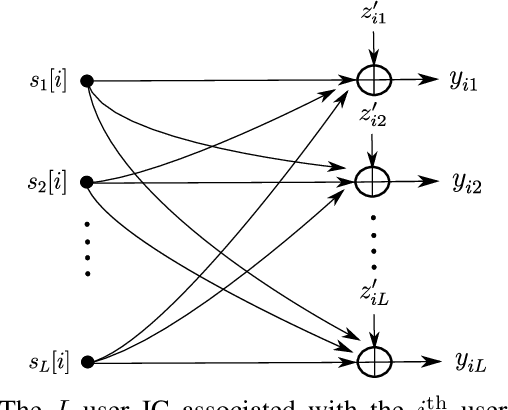
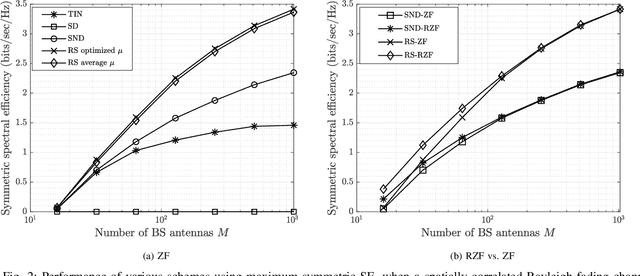
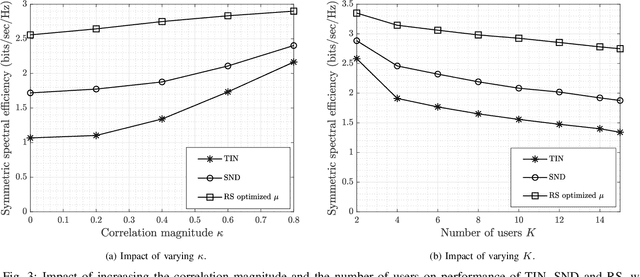
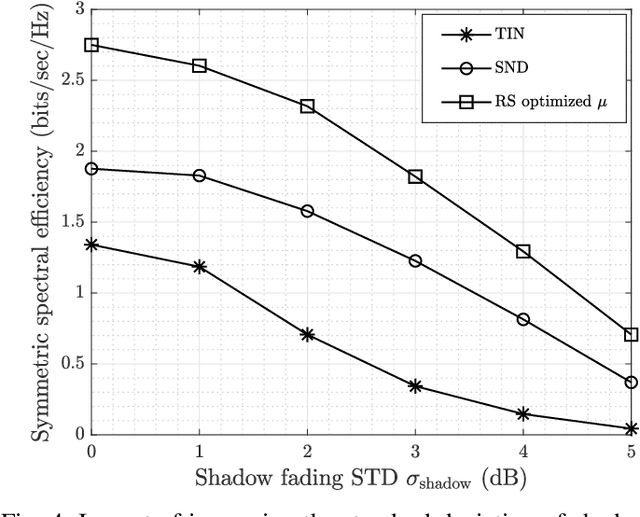
Abstract:We consider the downlink of a multi-cell massive MIMO system suffering from asymptotic rate saturation due to pilot contamination. As opposed to treating pilot contamination interference as noise (TIN), we study the performance of decoding the pilot contamination interference. We model pilot-sharing users as an interference channel (IC) and study the performance of schemes that decode this interference partially based on rate-splitting (RS), and compare the performance to schemes that decode the interference in its entirety based on simultaneous unique decoding (SD) or non-unique decoding (SND). For RS, we non-uniquely decode each layer of the pilot contamination interference and use one common power splitting coefficient per IC. Additionally, we establish an achievable region for this RS scheme. Solving a maximum symmetric rate allocation problem based on linear programming (LP), we show that for zero-forcing (ZF) with spatially correlated/uncorrelated channels and with a practical number of BS antennas, RS achieves significantly higher spectral efficiencies than TIN, SD and SND. Furthermore, we numerically examine the impact of increasing the correlation of the channel across antennas, the number of users as well as the degree of shadow fading. In all cases, we show that RS maintains significant gain over TIN, SD and SND.
 Add to Chrome
Add to Chrome Add to Firefox
Add to Firefox Add to Edge
Add to Edge